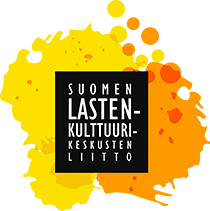Happiness without the need of buying
5. Where do your clothes come from?
Check out from your own or from your friend’s shirt (or other clothing) the country where the clothing was produced.
- Where is your clothing produced? What material is it?
- What does the life cycle of a product mean?
- What kinds of stages are there for example in the manufacturing of a cotton skirt?
- What kind of impact has the production of a cotton skirt on the environment?
- Through how many countries is your skirt likely to have travelled? Drawn your skirt’s imaginary journey in Google Earth. Demonstrate your journey to other students.
6. Write an essay titled “The need to own” Think about your personal consuming choices and write about thoughts provoked by the movie.
7. Matriculation examination tasks on consuming. Spring 2010: Example number 6. In 2009 recession was being warded off by a slogan “fence the recession by consuming”. What kind of ethical questions arise when thinking of increase in consumption and on the other hand cutting down on consumption? Features of a good answer.
Matriculation examination spring 2013, assignment 5. Analyze and evaluate the argumentation in Reetta Rönkä’s column (Page 7). Features of a good answer
GE 2 / GE 3 Matriculation examination tasks, courses GE 2/ GE3:
GE 3, Spring 2007 Climate changes. A) What is meant by climate changes? B) What reasons have been suggested for climate changes? C) What are the regional conflicts connected with climate changes? D) What can individual people do to control climate change?
GE 2
- Fish in the world food production. Take a look at the most prolific fishing areas and the reason for their location. What kinds of problems are connected with the production of fish? (Spring 2002)
-
The concept of “developing countries” classifies many different countries into one category.
- What are the common features the developing countries have?
- How do the developing countries differ from each other? Introduce three developing countries and point out their differences. (Spring 2005)
- Densely populated areas of the world. Discuss the reasons for dense population in those areas. Demonstrate a map of densely populated areas of the world and name the areas.(Autumn 2004)
- The requirements for the location of big information technology companies differ significantly from those of traditional steel industry. Evaluate this argument from the point of view of a) raw materials b) labor c) markets d) transport distances/connections e) energy supply f) location service equipment and the level of comfort. (Spring 2004)
- Discuss the problems arising from the increase of food production. (Autumn 2000)
The factors that affect the location of industry. How has the localization of industries and the industrial location factors changed and why? (Spring 1999).







